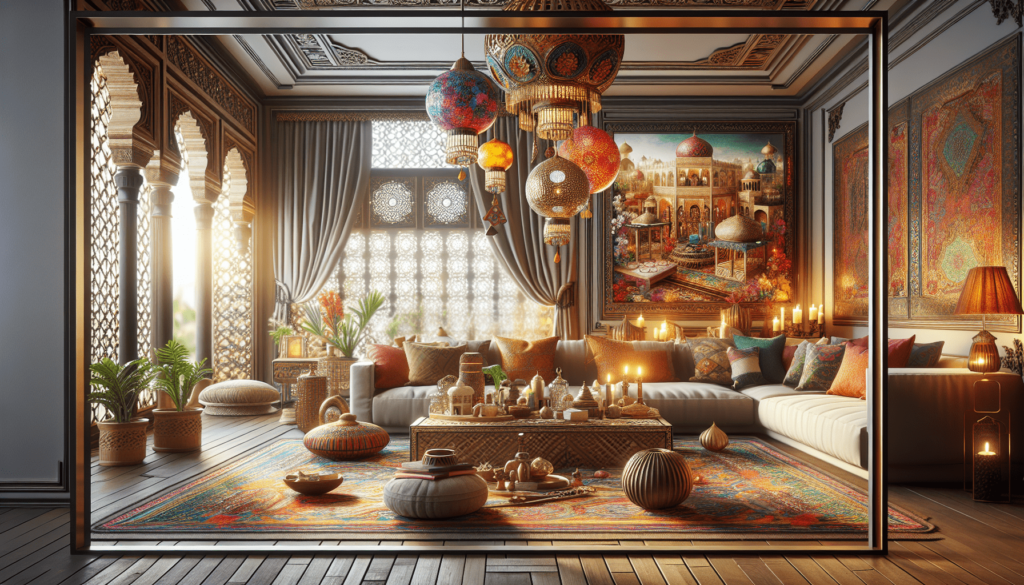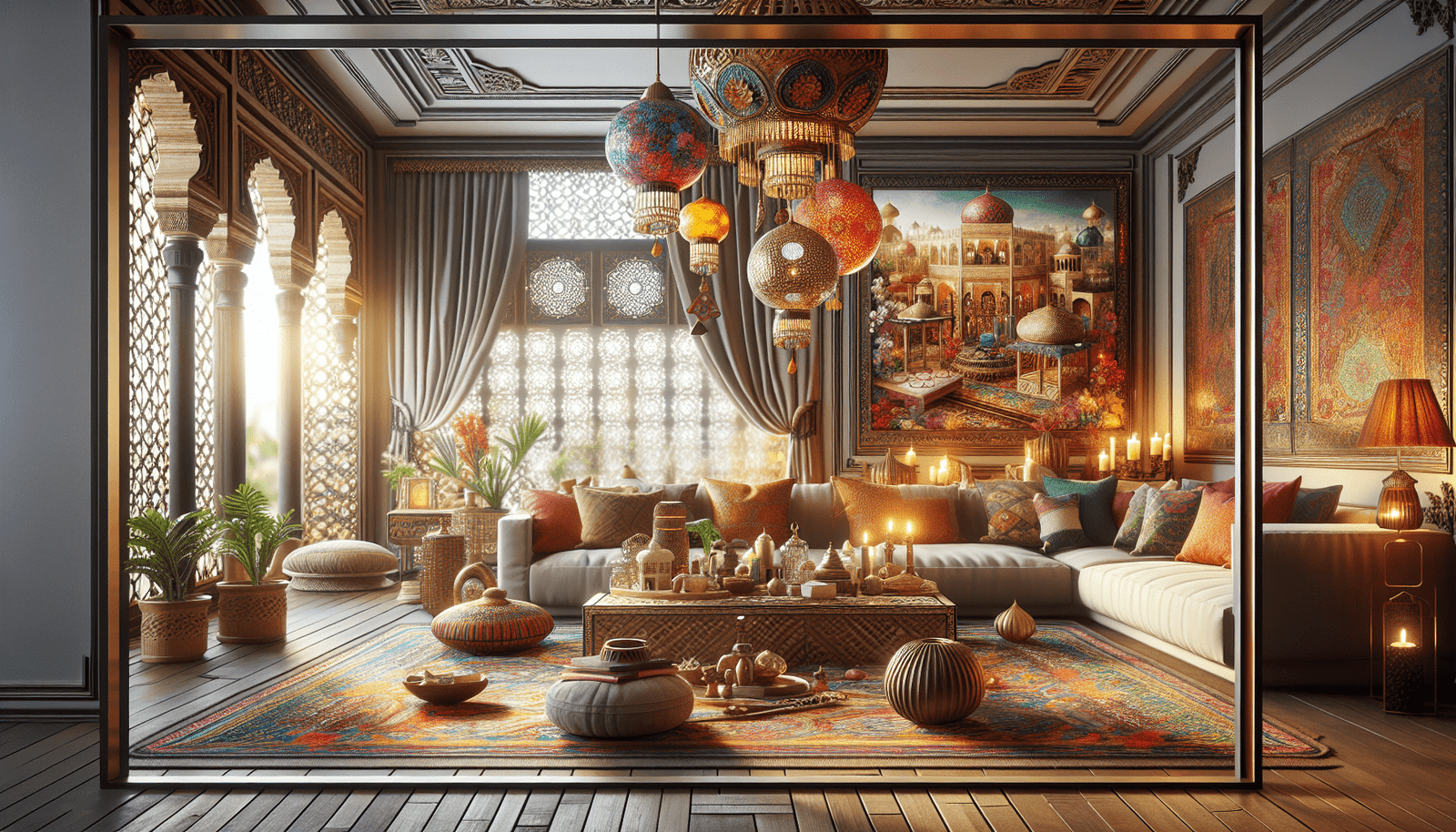Creating a Vision for Your Space
When designing a vibrant, cultural living space, the first step is to create a vision for the overall look and feel you want to achieve. Think about the atmosphere you want to create – cozy and intimate, or open and welcoming? Consider the colors, textures, and materials that will help bring your vision to life.
Consider Your Personal Style
Your space should be a reflection of your personal style and interests. Are you drawn to bold, vibrant colors and patterns, or do you prefer a more subdued palette? Think about the things that inspire you – whether it’s travel, art, or nature – and incorporate elements of these into your design.

Incorporating Cultural Elements
To infuse your living space with cultural flair, consider incorporating elements from different cultures that inspire you. This could be through artwork, textiles, furniture, or decorations. Mixing and matching pieces from various cultures can create a unique and eclectic look in your home.
Artwork and Decor
Artwork is a great way to bring cultural influences into your living space. Consider investing in pieces by local artists or pieces that reflect the traditions and aesthetics of different cultures. Textiles such as rugs, tapestries, and throw pillows can also add a touch of cultural charm to your home.
Furniture and Accessories
When selecting furniture and accessories for your space, look for pieces that are handmade or have unique cultural influences. This could be a beautiful hand-carved dining table, a set of ceramic vases from a different country, or a statement piece of furniture with intricate detailing.
Choosing Colors and Textures
The colors and textures you choose for your living space can have a significant impact on the overall vibe of the room. Vibrant, bold colors can add energy and personality, while softer, muted tones can create a more calming atmosphere. Similarly, mixing textures such as wood, metal, and fabric can add depth and interest to your space.
Color Palette
Consider choosing a color palette that complements the cultural elements you’ve incorporated into your design. Whether you opt for bright, saturated hues or earthy, natural tones, make sure the colors work well together to create a cohesive look. Don’t be afraid to experiment with unexpected color combinations to add visual interest.
Textures and Materials
Mixing different textures and materials can add richness and warmth to your living space. Consider incorporating materials such as leather, rattan, silk, or wool to add depth and variety. Textures like rough wood, smooth metal, or plush fabrics can create a dynamic and visually appealing environment.
Maximizing Space and Functionality
In a vibrant, cultural living space, it’s essential to maximize both space and functionality to create a comfortable and functional environment. Consider the layout of your furniture, the flow of traffic in the room, and the purpose of each area to ensure that your space is both visually appealing and practical.
Furniture Arrangement
Arrange your furniture in a way that promotes conversation and interaction, particularly if you enjoy entertaining guests. Consider creating cozy seating areas with comfortable chairs and sofas, and make sure there is enough space for people to move around freely. Don’t forget to leave space for cultural elements such as art or decorations to shine.
Storage Solutions
Incorporate storage solutions that are both stylish and practical to keep your space organized and clutter-free. Consider using baskets, shelves, or decorative boxes to store items while adding visual interest to your space. Multi-functional furniture such as ottomans with storage or coffee tables with drawers can also help maximize space.
Lighting and Ambiance
Lighting plays a crucial role in setting the mood and ambiance of your living space. Whether you prefer bright, natural light or warm, cozy lighting, the right lighting fixtures can enhance the cultural elements in your design and create a welcoming atmosphere.
Natural Light
Maximize natural light in your space by positioning furniture and accessories to allow sunlight to filter through. Consider sheer curtains or blinds that let in light while providing privacy. Natural light can showcase the colors and textures in your design and create a vibrant and inviting environment.
Ambient Lighting
In addition to natural light, incorporate ambient lighting such as ceiling lights, floor lamps, or wall sconces to create a cozy atmosphere in the evenings. Consider using warm, soft light bulbs or dimmer switches to adjust the brightness and mood of the room. Don’t forget to highlight cultural elements with accent lighting to draw attention to specific areas.

Personal Touches and Styling
Adding personal touches and styling elements to your living space can make it feel truly unique and inviting. Whether it’s family photos, souvenirs from your travels, or handmade decor, these personal touches add character and warmth to your home.
Family Heirlooms
Display family heirlooms or sentimental items that hold special meaning to you and your family. Whether it’s a vintage clock, a piece of jewelry, or a handcrafted quilt, these pieces can add a sense of history and nostalgia to your space.
Travel Souvenirs
Showcase souvenirs from your travels, such as artwork, pottery, or textiles, to add a global flair to your design. These items can serve as conversation starters and reminders of your adventures around the world. Mix these cultural elements with your existing decor to create a harmonious and eclectic look.
Maintaining Balance and Harmony
When combining vibrant colors, cultural elements, and personal touches in your living space, it’s essential to maintain balance and harmony to prevent the space from feeling overwhelming. Pay attention to scale, proportion, and visual weight to achieve a cohesive and pleasing design.
Scale and Proportion
Consider the scale of your furniture and decor in relation to the size of the room to ensure a harmonious balance. Avoid overcrowding the space with oversized furniture or too many accessories. Instead, aim for a mix of large statement pieces and smaller accents to create visual interest.
Visual Weight
Distribute visual weight evenly throughout the room by balancing colors, textures, and patterns. Place heavier pieces of furniture against solid walls to anchor the space, and use lighter, airier elements to balance out the design. Pay attention to how colors and patterns interact to create a harmonious and visually appealing environment.
Conclusion
Designing a vibrant, cultural living space is an opportunity to showcase your unique style, interests, and personality. By incorporating cultural elements, choosing colors and textures thoughtfully, maximizing space and functionality, and adding personal touches, you can create a space that is both visually stunning and deeply meaningful. Remember to maintain balance and harmony in your design to ensure a comfortable and inviting atmosphere for you and your guests to enjoy.

